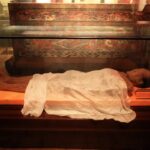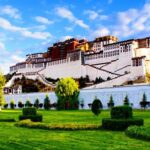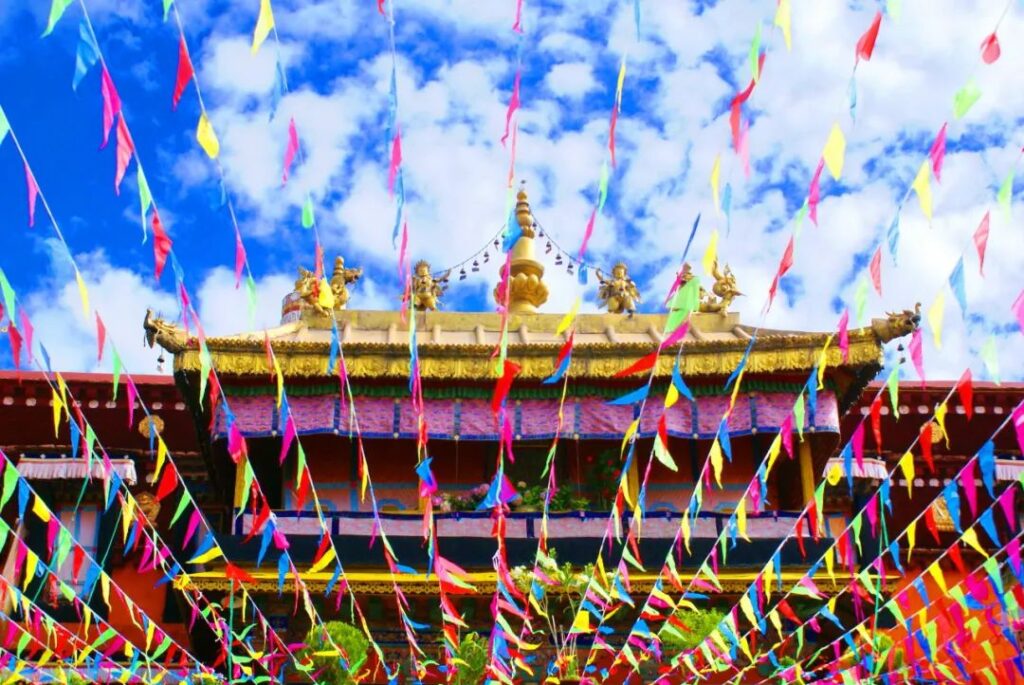
“First there was Jokhang Temple, then there was the city of Lhasa.” This is the first folk saying I heard upon arriving in Lhasa. Jokhang Temple, built during the heyday of the Tubo Dynasty in the 7th century, is a Tibetan Buddhist temple located in the center of Lhasa. It holds the highest position in Tibetan Buddhism. “If you go to Lhasa without visiting Jokhang Temple, it’s as if you haven’t been to Lhasa at all.” Everyone who comes to Lhasa visits this oldest temple in Tibet.
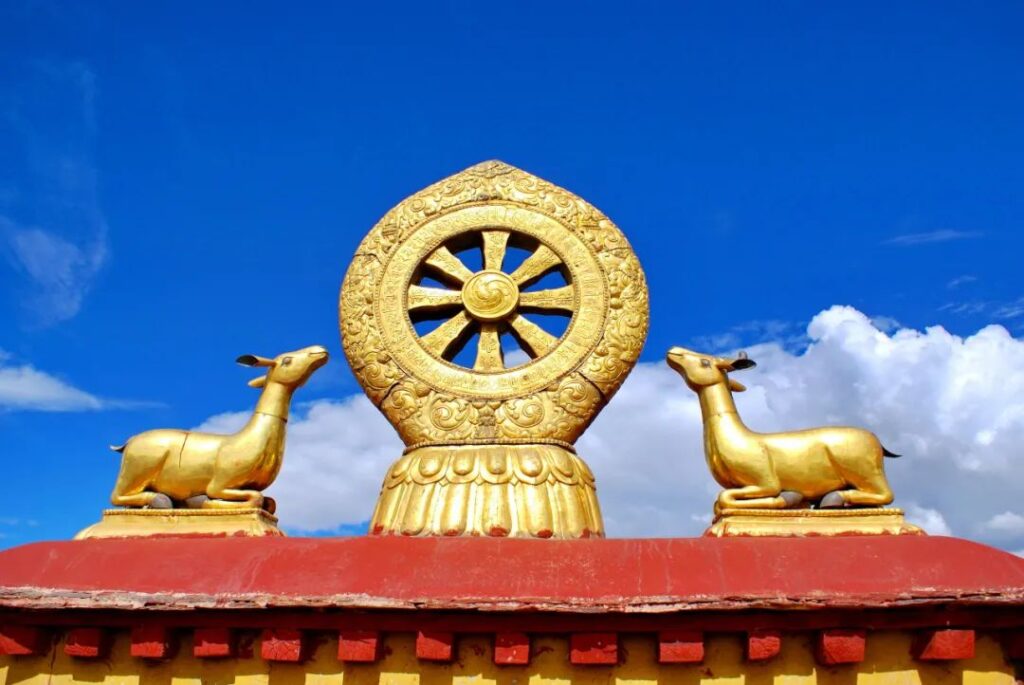
It is said that the name of Lhasa also originated from Jokhang Temple. According to legend, when Princess Wencheng of the Tang Dynasty entered Tibet, this area was still a swamp. The Tubo people used white goats to carry soil and fill the pond, building Jokhang Temple and Ramoche Temple. In Tibetan, “ra” means goat and “sa” means soil. Jokhang Temple was initially called “Rasa.” After the construction of Jokhang Temple, a city gradually formed around the temple, and the city’s name evolved into today’s “Lhasa.”

Jokhang Temple is also known to Tibetans as “Tsulagkhang” and “Jokhang,” which means “Buddha Hall” in Tibetan. The status of Jokhang Temple in the hearts of Tibetans is no less than that of the Potala Palace. They call the area around Barkhor Street, with Jokhang Temple at its center, “Lhasa.” It is evident that Jokhang Temple holds a central position in Lhasa, not only geographically but also in various aspects of social life.
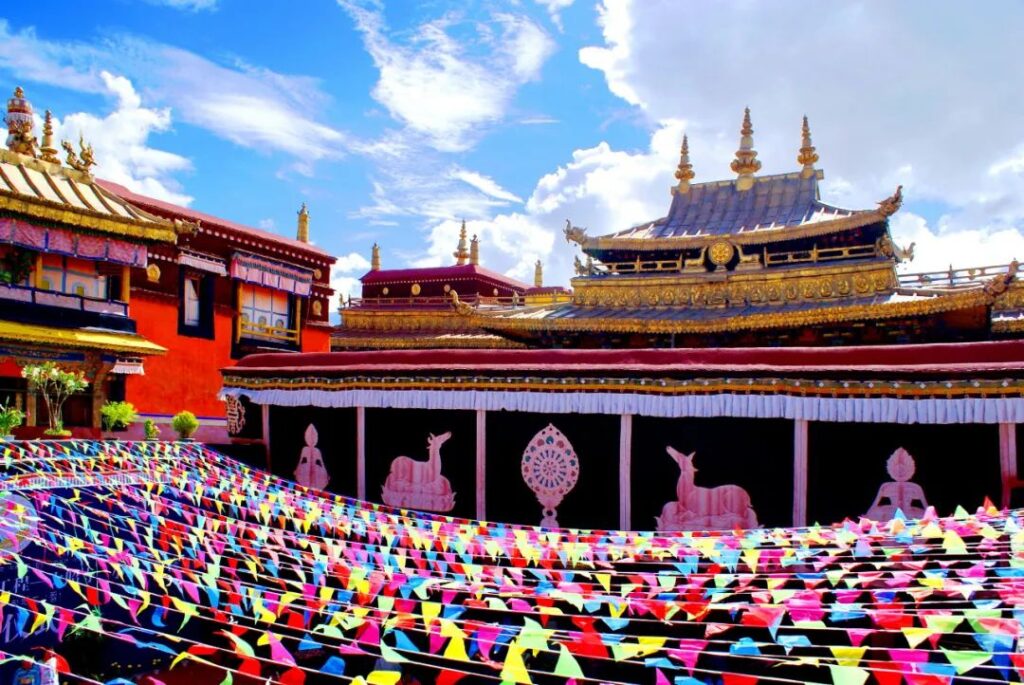
Jokhang Temple was built by Songtsen Gampo, the king of Tubo, to enshrine a statue of Jowo Mikyoe Dorje (an 8-year-old life-size statue of Sakyamuni). This statue was brought from Kathmandu when Songtsen Gampo married Princess Bhrikuti of Nepal. When Princess Wencheng of the Tang Dynasty entered Tibet, she built Ramoche Temple near Jokhang Temple to house the Jowo Sakyamuni statue (a 12-year-old life-size statue of Sakyamuni) brought from Chang’an.
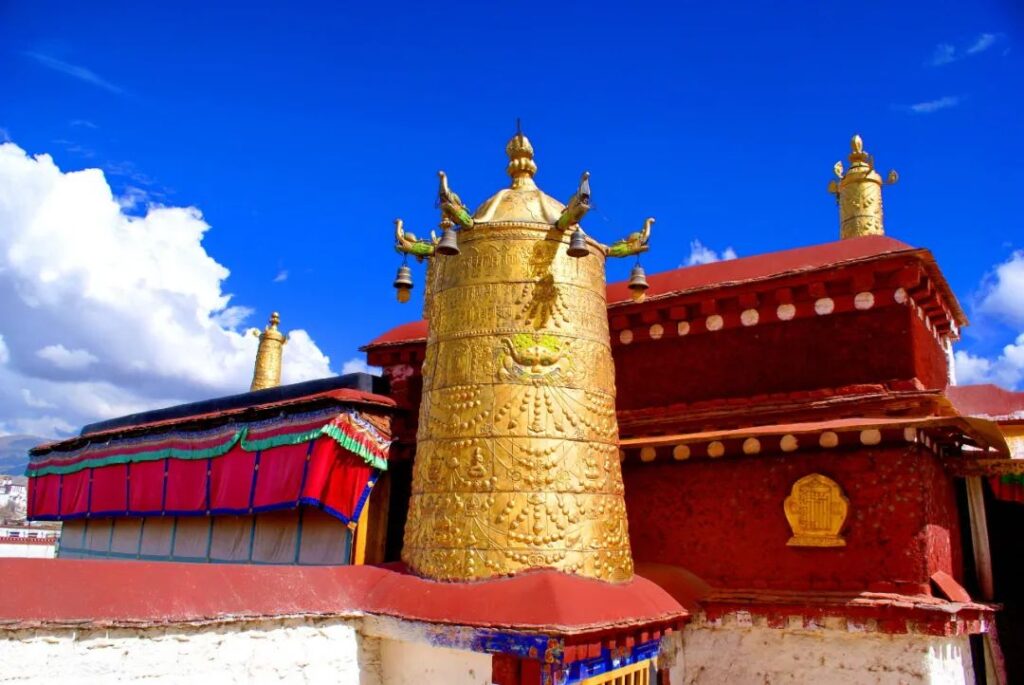
It is said that later, to prevent the Jowo Sakyamuni statue from being taken away by the Tang army, the Tubo people hid the statue inside Jokhang Temple. After Princess Jincheng of the Tang Dynasty entered Tibet, she took out the Jowo Sakyamuni statue and enshrined it in Jokhang Temple. The Jowo Mikyoe Dorje statue brought by Princess Bhrikuti from Nepal was then transferred to Ramoche Temple in the 8th century. From the transfer of the two statues, it can be seen that the Tubo people placed more importance on their relationship with the Tang Dynasty.
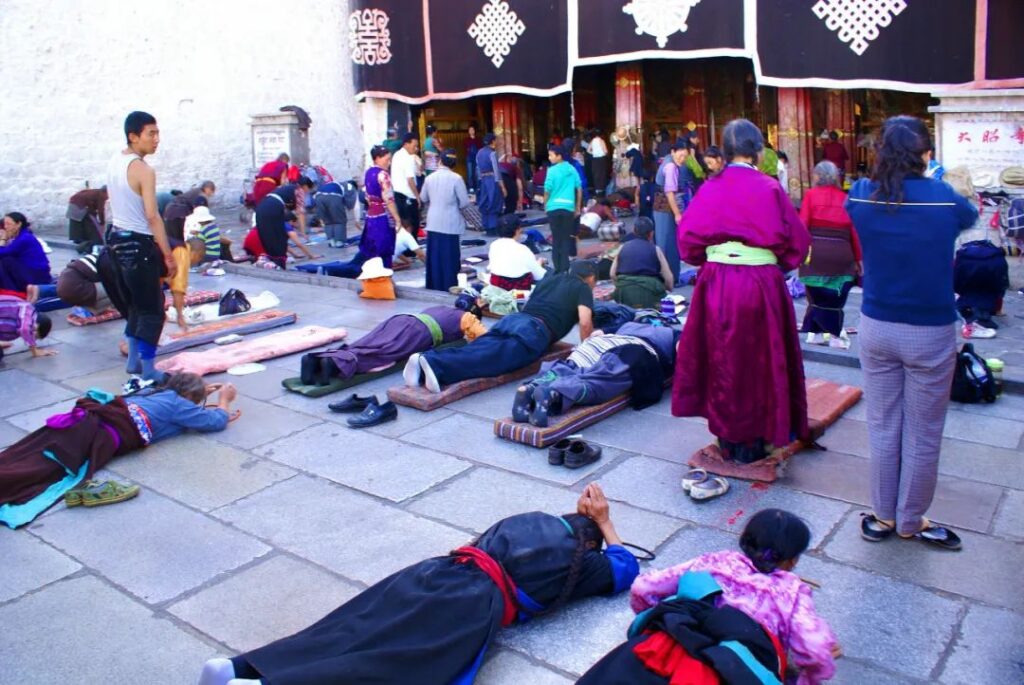
Upon arriving at Jokhang Temple, I was immediately struck by the solemn and sacred atmosphere of the temple and moved by the devotion of the worshippers. Jokhang Temple holds the highest position in Tibetan Buddhism and is incredibly sacred in the hearts of Tibetans. Not only do Lhasa’s Tibetans wake up before dawn every day to worship and prostrate themselves in front of Jokhang Temple, but Tibetans from thousands of miles away also come here to worship, performing prostrations every three steps.
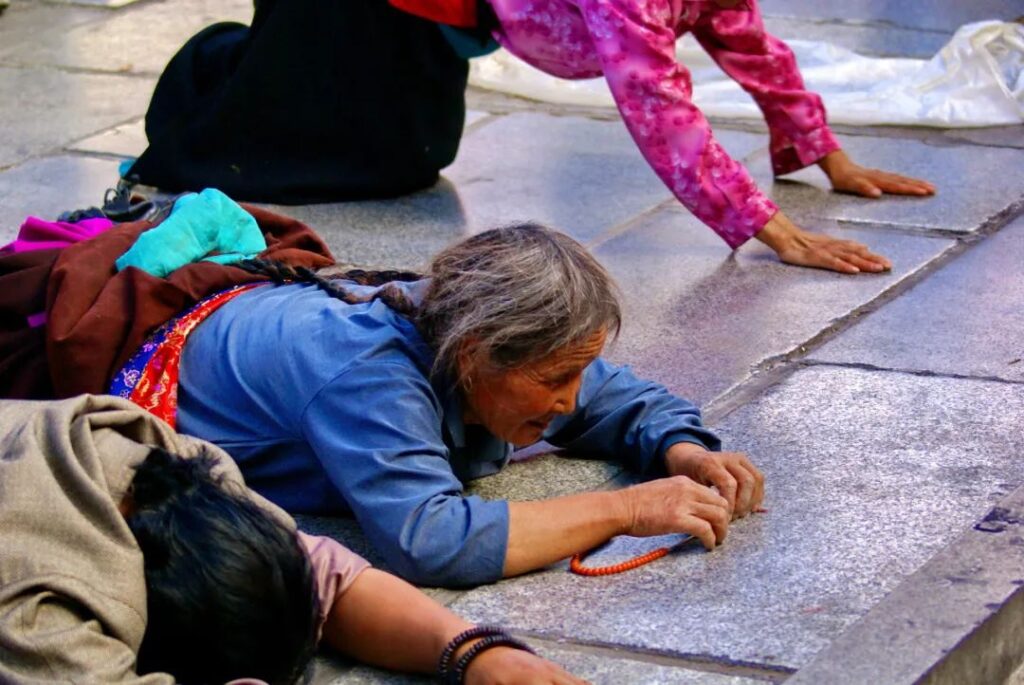
I carefully observed the posture of the Tibetans’ prostrations: standing, joining hands and raising them above the head to receive the Buddha’s teachings, then moving the joined hands to the lips and pausing, then to the chest and pausing, aligning the mouth and heart with the Buddha’s intentions. Then, separating the hands to the sides of the body, touching the ground and sliding forward as the body lowers, while making wishes in the heart and reciting prayers. After the body fully touches the ground, the hands trace an arc and join in front of the head, then standing up again, repeating the cycle.
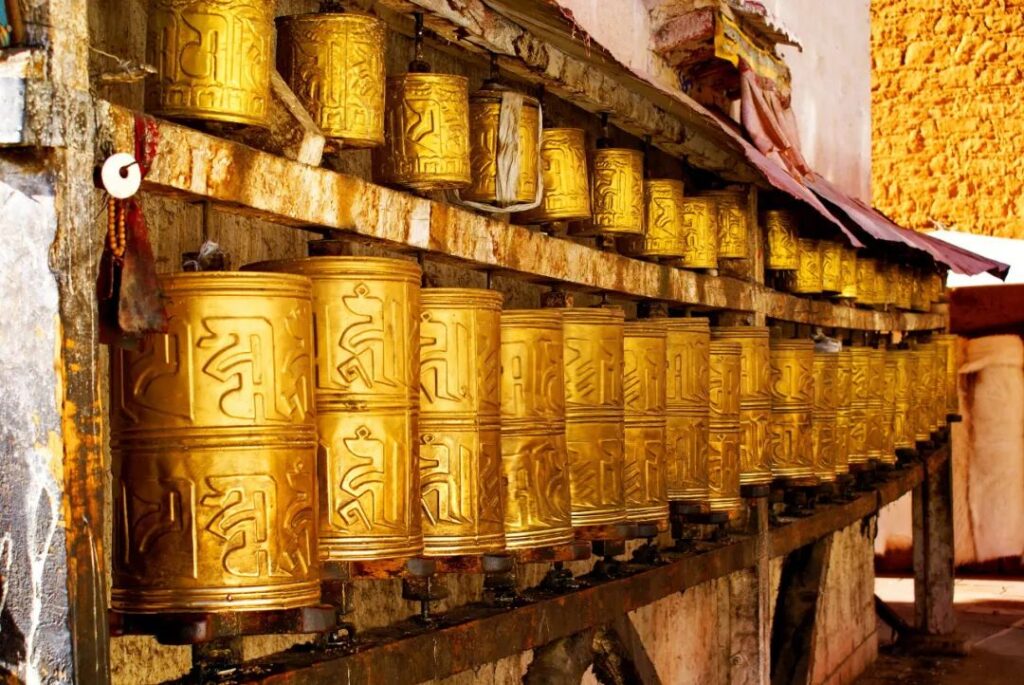
Entering the temple, the first sight is numerous prayer wheels, which every visitor turns in sequence. It can be said that the prayer wheels inside the temple never stop spinning. Moving further inside, there is a courtyard resembling an atrium, where many Tibetans pray to the Buddha. They assume various postures – standing, kneeling, or prostrating on the ground, their faces filled with expressions of devotion.

Jokhang Temple has a history of more than 1,300 years. Since its construction, it has undergone repairs and expansions throughout the generations, forming a vast architectural complex. The architecture of Jokhang Temple integrates the architectural styles of Tibet, the Tang Dynasty, Nepal, and India, becoming an eternal classic of Tibetan religious architecture. The gilded copper tile roof of the main hall is magnificent and spectacular, featuring the architectural style of the Tang Dynasty while also incorporating architectural artistic features from Nepal and India.
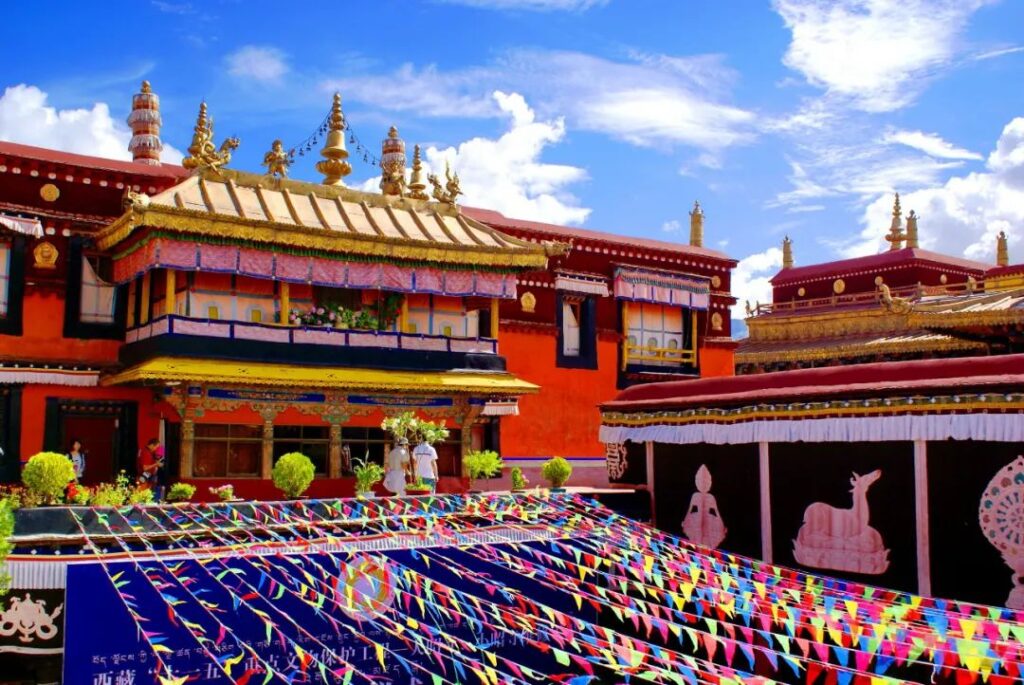
Passing through the courtyard, I entered the interior of Jokhang Temple. Although butter lamps were placed everywhere, it was still pitch-dark before my eyes, as if I had entered a deep, dark corner, unconsciously slowing my footsteps. In the dim light, I saw many male and female devotees lined up along the side corridors of the temple, holding butter lamps, quietly queuing and slowly moving forward to enter the small shrines around.
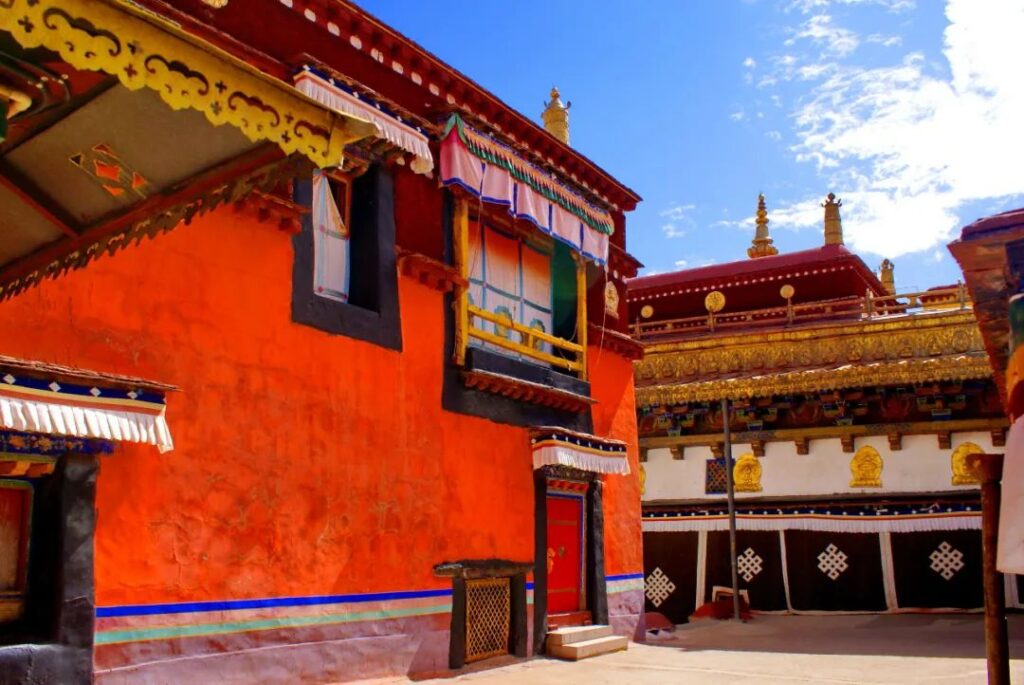
As I walked and observed, I discovered that different Buddha statues were enshrined in the small shrines. People would enter, circumambulate once, add some butter to the lamp bowls, or toss some coins. Some even pressed their heads against the wooden frame in front of the Buddha statues. In this way, they would visit each small shrine, one by one. After completing one floor, they would ascend to the second floor, thus visiting all the small shrines in the three-story temple.
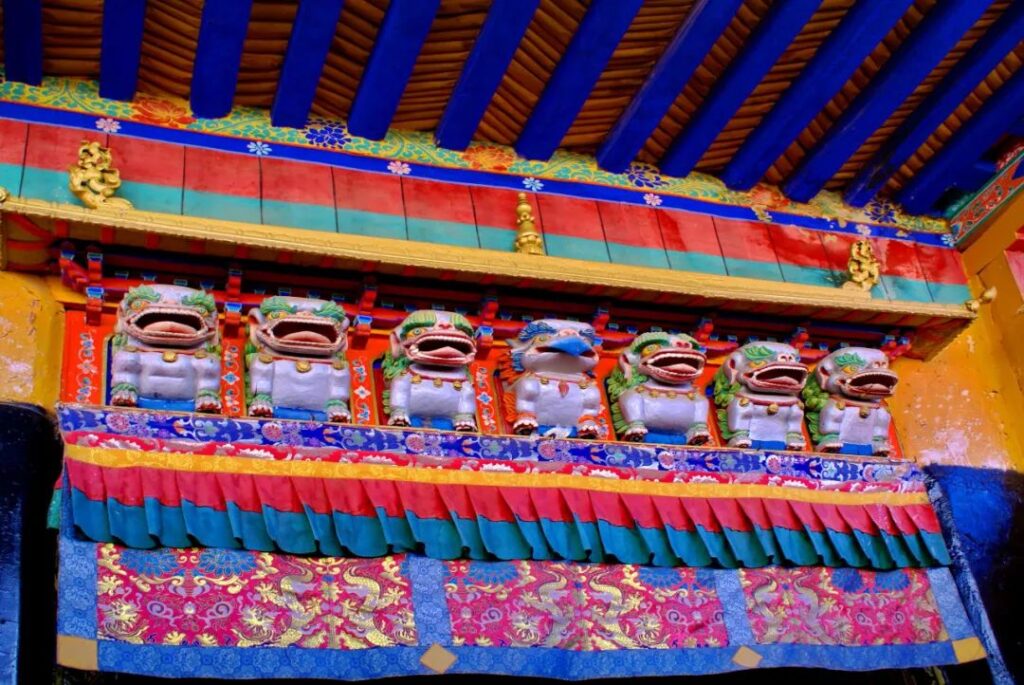
After all, Jokhang Temple is a thousand-year-old building. Although electric lights have been installed inside, it is still pitch-dark. The passages and stairs are relatively narrow. As the butter lamps burn, they emit a strong odor of grease. Coupled with the large number of people praying inside the temple and the lack of ventilation, the mixture of oil smoke and body odor is almost suffocating.
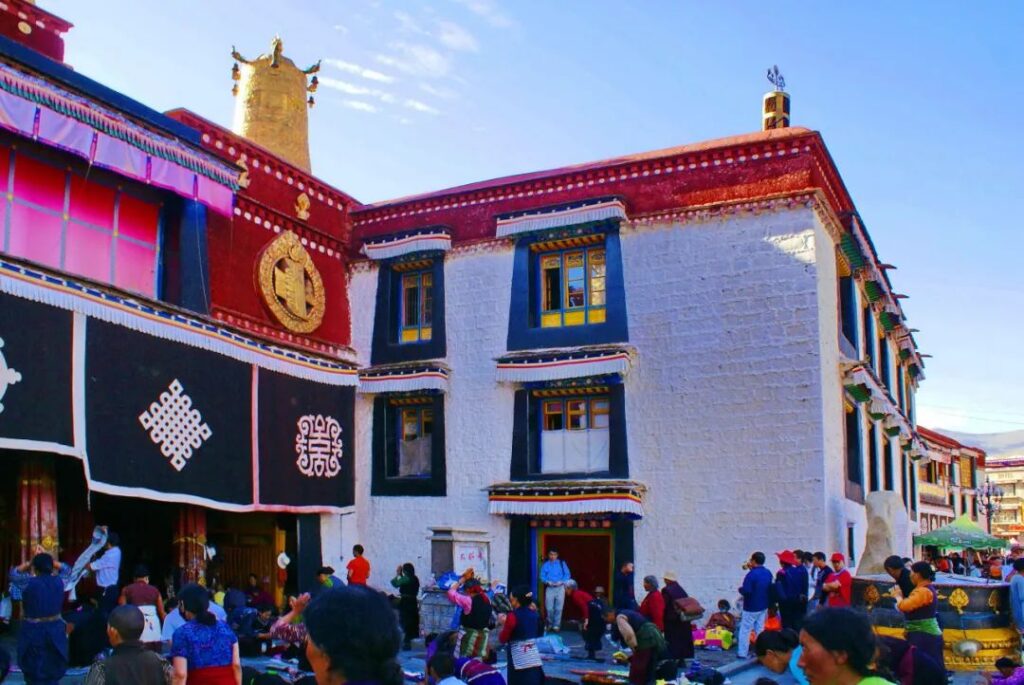
However, countless male and female devotees still pour into the temple with faces full of piety. At this moment, the devotion of the believers made me personally feel the power of Buddhism and its spiritual strength, and experience the immense influence of Buddhism. Jokhang Temple has become a spiritual sustenance for Tibetans, a symbol of power, and a place full of hope.
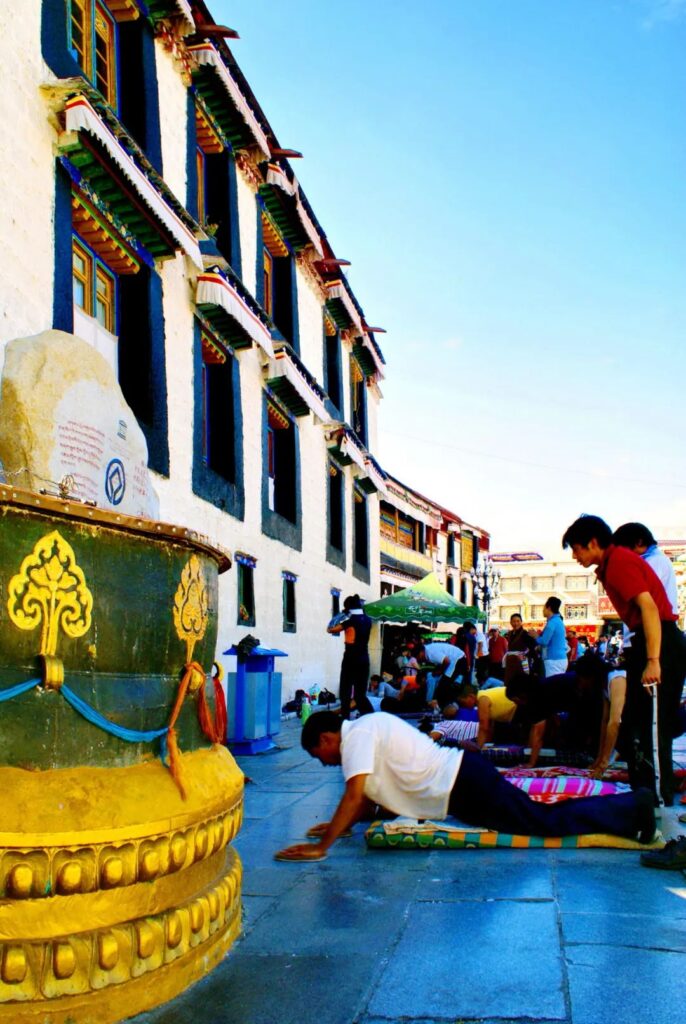
In Tibet, the hardworking and simple Tibetans rely on their faith to support their lives. They will give all their life savings to the Buddha, and they will kowtow 100,000 times at Jokhang Temple in their lifetime. Tibetans from thousands of miles away will also use their bodies as a measure, prostrating themselves on the ground to come here to worship, all to pay homage to the Buddha at Jokhang Temple and express their loyalty to the Buddha.
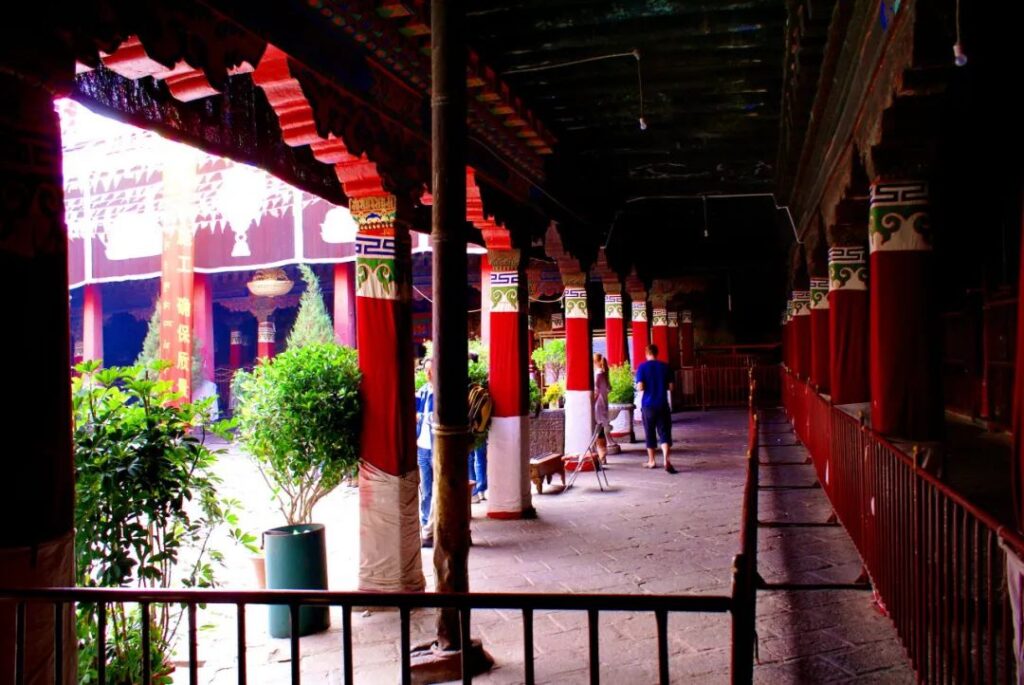
On the way to Jokhang Temple, some people may die from illness or exhaustion. Their companions will break off one of their teeth and bring it to Jokhang Temple, inserting it into the crevices of the wooden pillars in the Sakyamuni Shrine to fulfill the deceased’s wish. During my visit to Jokhang Temple, I personally saw the teeth embedded in the crevices of the wooden pillars, which shows the sacred status of Jokhang Temple in the hearts of Tibetans.
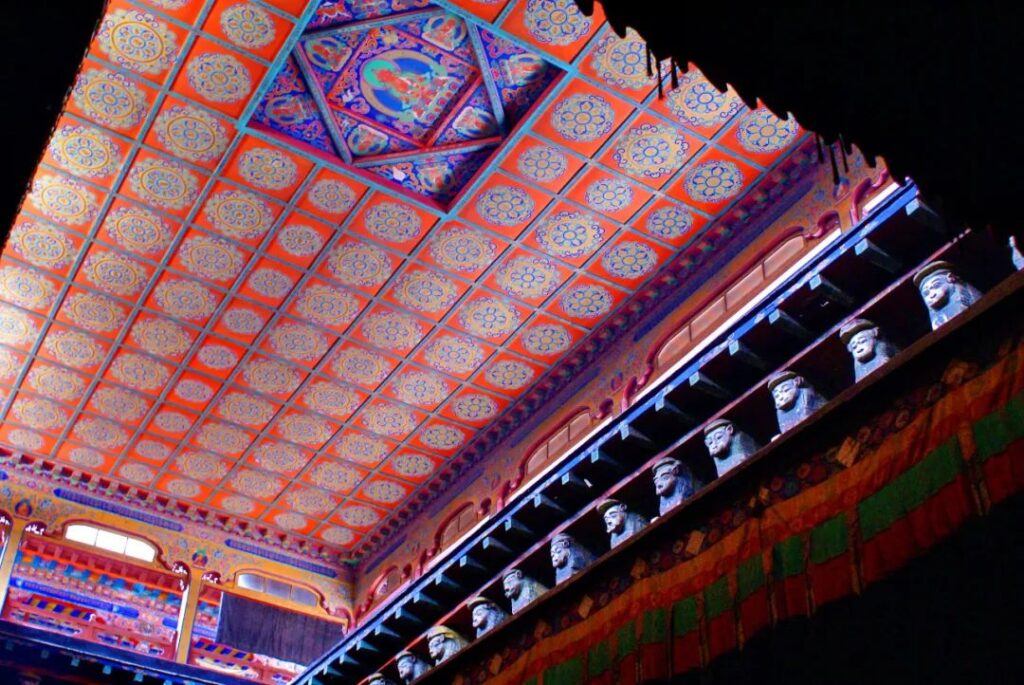
Most temples in Tibet belong to a certain sect of Tibetan Buddhism, but Jokhang Temple is a sacred temple revered by all sects. It is said that after the unification of politics and religion in Tibet, the Gaxia government institution was set up inside Jokhang Temple, and the “Golden Urn Drawing” ceremony for the reincarnation of successive Living Buddhas was also held in Jokhang Temple. In 1995, the Golden Urn Drawing ceremony for the reincarnation of the 10th Panchen Lama’s soul boy was held here.

As I walked out of Jokhang Temple, many worshippers kept entering my sight, giving me a silent touch. I was afraid that my actions would disturb their pious hearts. I quietly stood at the corner of the street, following their footsteps with my eyes. I was infected by their actions, and their inner piety and tenacity deeply shook my soul.
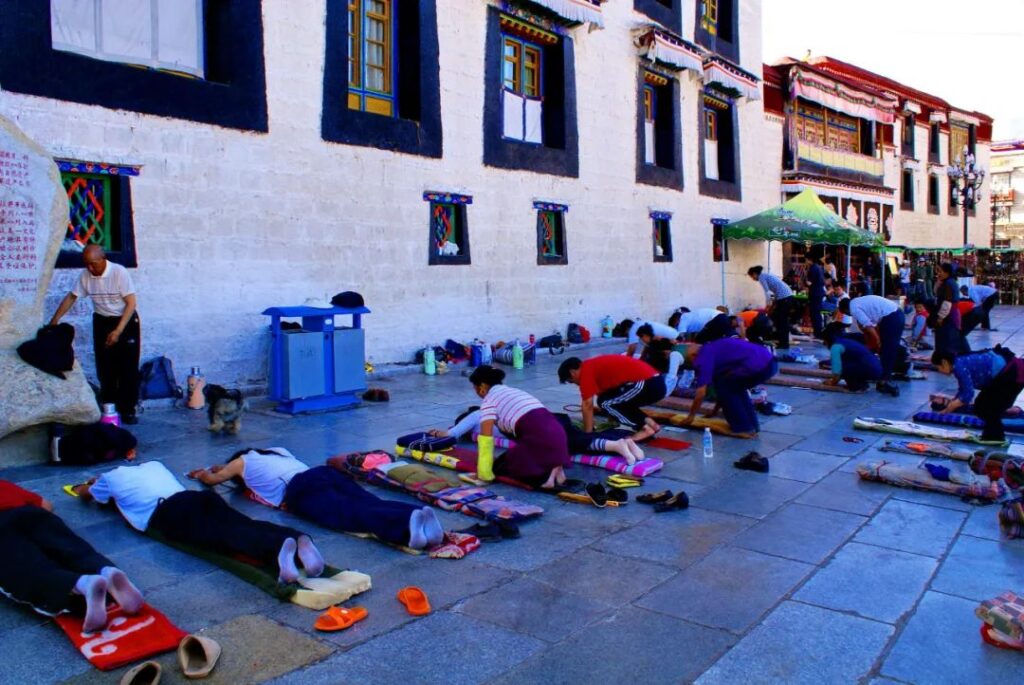
On the ground in front of the temple, dozens or hundreds of bluestone slabs have been polished to a shine by worshippers. Looking at the worshippers prostrating on the bluestone slabs, at that moment, it was truly impossible to describe the scene before my eyes with words. Their spirit and will moved me. Jokhang Temple, the sacred and solemn temple in the hearts of Tibetans.
